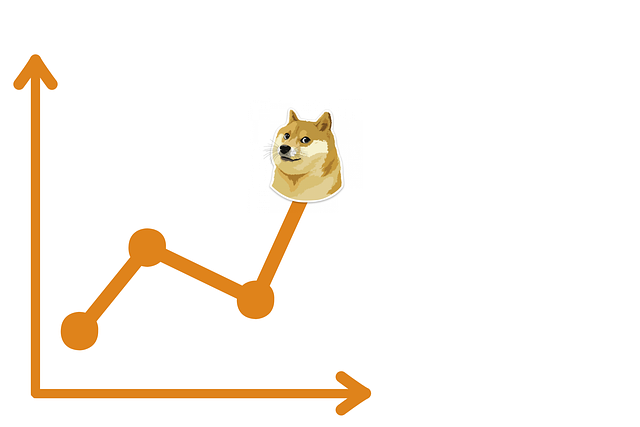Bitcoin Price Prediction Using ARIMA Model GitHub
Author: Jameson Richman Expert
Published On: 2025-08-12
Prepared by Jameson Richman and our team of experts with over a decade of experience in cryptocurrency and digital asset analysis. Learn more about us.
Predicting the future price of Bitcoin remains one of the most complex and intriguing challenges in financial data analysis. Its notorious high volatility, rapid swings, and the influence of multifarious external factors make traditional forecasting approaches often inadequate. Since Bitcoin's inception in 2009, the cryptocurrency market has continually defied classical financial models, prompting data scientists and analysts to explore innovative methodologies. Among these, the AutoRegressive Integrated Moving Average (ARIMA) model has gained prominence owing to its flexibility and interpretability in modeling linear dependencies within time series data. This comprehensive article explores the technical nuances of employing ARIMA for Bitcoin price prediction, highlights valuable open-source resources available on GitHub, and provides strategic insights for effective deployment amidst the contemporary volatile market landscape.

Understanding the ARIMA Model and Its Application to Bitcoin Price Forecasting
ARIMA, standing for AutoRegressive Integrated Moving Average, is a robust statistical modeling framework designed to analyze and forecast univariate time series data by capturing linear dependencies. Its core strength lies in its ability to model data exhibiting trends and autocorrelations, which are prevalent in financial markets like Bitcoin. The model comprises three fundamental components:
- AutoRegression (AR): Captures the relationship between the current value and its previous lagged observations, effectively modeling how past prices influence future values.
- Integrated (I): Implements differencing of the time series to attain stationarity—eliminating trends or seasonal effects that can bias predictions—thus satisfying the stationarity assumption of ARIMA models.
- Moving Average (MA): Accounts for the dependency between an observation and residual errors from a moving average model applied to lagged forecast errors, smoothing out short-term fluctuations.
When applied to Bitcoin, ARIMA aims to extract the linear components of price movements, providing insights into underlying trends and autocorrelations. Although Bitcoin markets are heavily influenced by non-linear phenomena—such as regulatory announcements, macroeconomic shifts, and social sentiment—ARIMA serves as a valuable baseline model. Its interpretable parameters facilitate understanding of market dynamics and offer initial forecasts that can be refined or integrated into hybrid models. Moreover, ARIMA's simplicity allows quick prototyping, making it an essential tool during early exploratory phases of analysis.
However, it is critical to acknowledge that ARIMA's effectiveness diminishes during periods characterized by sudden shocks or regime changes, which are common in crypto markets. Therefore, combining ARIMA with other modeling techniques—such as GARCH for volatility or machine learning models—can enhance predictive performance and robustness.
The Significance of GitHub in Supporting ARIMA-Based Cryptocurrency Prediction
GitHub has established itself as a central hub for open-source development, hosting a vast array of repositories dedicated to time series analysis, including Bitcoin price forecasting with ARIMA. These repositories often encompass end-to-end pipelines that streamline data acquisition, preprocessing, model training, validation, and visualization, significantly reducing development time and complexity.
Key features and resources typically found in these repositories include:
- Data acquisition scripts: Automated fetching of historical Bitcoin prices from APIs such as Binance, Coinbase, CoinGecko, and CoinMarketCap, enabling seamless data integration for analysis.
- Stationarity testing tools: Implementation of tests like the Augmented Dickey-Fuller (ADF) and KPSS to assess whether differencing is necessary, ensuring model assumptions are met.
- Visualization utilities: Tools for plotting ACF and PACF graphs, which assist in initial parameter estimation for p and q.
- Automated parameter tuning: Usage of the pmdarima's auto_arima function, which systematically searches for optimal (p,d,q) combinations based on criteria like AIC or BIC, accelerating model selection.
- Integration with live data streams: Scripts that enable real-time or historical data analysis, facilitating iterative experimentation and validation.
- Performance evaluation: Modules to compute metrics such as MAE, RMSE, and MAPE, along with residual diagnostics for assessing model adequacy.
By leveraging these open-source tools, practitioners can enhance reproducibility, foster collaboration, and accelerate deployment processes. The transparent nature of GitHub repositories allows for community-driven improvements, bug fixes, and adaptations to specific market conditions, making it an invaluable resource for Bitcoin forecasting projects utilizing ARIMA.
Implementing and Fine-Tuning ARIMA for Bitcoin Price Data
Effective application of ARIMA hinges on meticulous data preprocessing and systematic model tuning. An optimized pipeline generally involves the following steps:
- Data Acquisition: Secure high-quality historical Bitcoin price data from trusted sources such as CoinGecko API, CryptoCompare, or directly via exchange APIs. The dataset should encompass sufficient temporal granularity—ranging from intraday, daily, to multi-year data—to capture relevant patterns and seasonality.
- Data Cleaning and Preprocessing: Address missing values through interpolation or forward-filling, and detect outliers using techniques like z-score or IQR methods. Applying transformations such as logarithmic or Box-Cox can stabilize variance and mitigate heteroscedasticity, improving model performance.
- Stationarity Testing: Employ tests like the Augmented Dickey-Fuller (ADF) or KPSS to evaluate stationarity. Non-stationary data necessitate differencing—often once (d=1) or twice (d=2)—to remove trends and stabilize the mean.
- Parameter Identification: Utilize ACF (to identify q) and PACF (to identify p) plots for initial parameter estimates. Significant spikes at specific lags guide the choice of AR and MA orders. Automated tools like auto_arima can optimize parameter selection based on information criteria, reducing manual guesswork.
- Model Fitting and Diagnostics: Fit the ARIMA model to training data with selected parameters. Examine residuals for randomness, normality, and absence of autocorrelation. Residual diagnostics are crucial; non-random residuals indicate model misspecification requiring re-estimation or additional differencing.
- Forecasting and Validation: Generate forecasts on validation or test datasets and evaluate predictive accuracy using metrics such as MAE, RMSE, or MAPE. Incorporate cross-validation methods tailored for time series—like rolling window validation—to assess model stability and robustness over different periods.
- Model Updating: In the dynamic crypto market environment, retraining models periodically with new data ensures forecasts remain relevant. Implementing automated pipelines facilitates continual learning and adaptation.
This iterative process emphasizes simplicity and interpretability, balancing model complexity with predictive accuracy. Regular recalibration is particularly vital during market upheavals, ensuring that forecasts adapt to changing regimes.

Limitations and Challenges of Using ARIMA in Cryptocurrency Markets
While ARIMA offers valuable insights, its application in cryptocurrency markets faces several inherent limitations:
- Linearity Assumption: ARIMA models linear relationships and cannot inherently capture non-linear market behaviors such as sudden jumps, regime shifts, or chaotic fluctuations common in Bitcoin prices.
- Univariate Nature: Relying solely on past prices, ARIMA ignores external variables—such as social media sentiment, macroeconomic indicators, or blockchain activity—that exert significant influence on Bitcoin's price movements.
- Sensitivity to Parameter Misspecification: Incorrect p, d, q values can lead to poor forecasts, overfitting, or underfitting. Automated selection procedures mitigate this but are not foolproof.
- Assumption of Stationarity: Achieving stationarity often requires differencing, which may inadvertently remove meaningful information or oversimplify complex dynamics.
- Handling External Shocks: ARIMA models don't explicitly account for external shocks, such as regulatory bans or macroeconomic crises, which can cause abrupt market movements.
To address these limitations, hybrid models integrating ARIMA with machine learning techniques—like GARCH for modeling volatility clustering, or LSTM neural networks for capturing non-linear dependencies—are increasingly popular. These approaches provide a more comprehensive framework capable of adapting to the multifaceted nature of cryptocurrency markets.
Integrating ARIMA Predictions into Trading Strategies
Forecasts generated by ARIMA models can serve as a valuable component within comprehensive trading strategies. Short-term predictions—ranging from hours to days—are particularly actionable when combined with technical analysis indicators such as Moving Averages, RSI, Bollinger Bands, or MACD.
Implementation involves embedding ARIMA forecasts into algorithmic trading systems through APIs, enabling automated buy or sell signals based on predicted price movements. For instance, a rising forecast might trigger a long position, while a downward forecast could initiate a short or exit position.
However, caution is paramount. Relying solely on univariate ARIMA forecasts exposes traders to risks from unforeseen external shocks. To mitigate this, employ risk management techniques such as stop-loss orders, position sizing, diversification, and portfolio hedging. Additionally, regular model recalibration aligns predictions with evolving market dynamics, maintaining relevance and reducing drift.
Moreover, combining ARIMA forecasts with sentiment analysis—derived from social media trends, news signals, or macroeconomic data—can improve decision-making robustness. Thorough backtesting over historical data and forward testing in simulated environments help validate strategies before live deployment.
Future Directions: Enhancing Bitcoin Price Forecasting
The future of cryptocurrency prediction involves hybrid, ensemble, and deep learning approaches that transcend the limitations of traditional ARIMA models. Notable advancements include:
- Integration with Machine Learning Models: Combining ARIMA with LSTM, Gated Recurrent Units (GRU), or Transformer architectures enables capturing non-linear dependencies, long-term trends, and regime shifts more effectively.
- Incorporating External Data: Enriching models with macroeconomic indicators (interest rates, inflation), blockchain metrics (transaction volumes, active addresses, hash rate), and social sentiment data enhances predictive power and responsiveness.
- Real-Time Data Pipelines: Stream processing frameworks (Apache Kafka, Pulsar) facilitate continuous data ingestion and model updating, allowing for adaptive forecasting in volatile markets.
- Explainability and Transparency: Tools like SHAP or LIME can help interpret complex models, foster trust, and support regulatory compliance by elucidating feature contributions.
Emerging research emphasizes the importance of explainability, robustness, and computational efficiency, which collectively contribute to more reliable and actionable crypto market forecasts.

Summary and Practical Recommendations
Using ARIMA models for Bitcoin price prediction, especially with the support of open-source repositories on GitHub, offers a practical and interpretable approach suitable for initial analysis and short-term forecasting. Nonetheless, the high volatility, external shocks, and non-linear behaviors characteristic of cryptocurrency markets necessitate cautious application and continuous adaptation.
To enhance forecast accuracy and robustness, consider hybrid modeling strategies that incorporate volatility models, machine learning, and external data sources. Rigorous data preprocessing, systematic parameter tuning, residual diagnostics, and regular model updates are critical best practices. Moreover, actively engaging with the open-source community—by exploring, contributing to, and customizing repositories—can significantly accelerate development and improve results.
Staying informed of emerging research, participating in forums, and sharing insights foster innovation and maintain a competitive edge in the rapidly evolving landscape of cryptocurrency prediction. By combining transparency, methodological rigor, and community collaboration, practitioners can better navigate the complexities of Bitcoin forecasting and harness ARIMA's strengths within a broader, adaptive framework.